D’you want humans with that? How the fast food industry is turning to AI
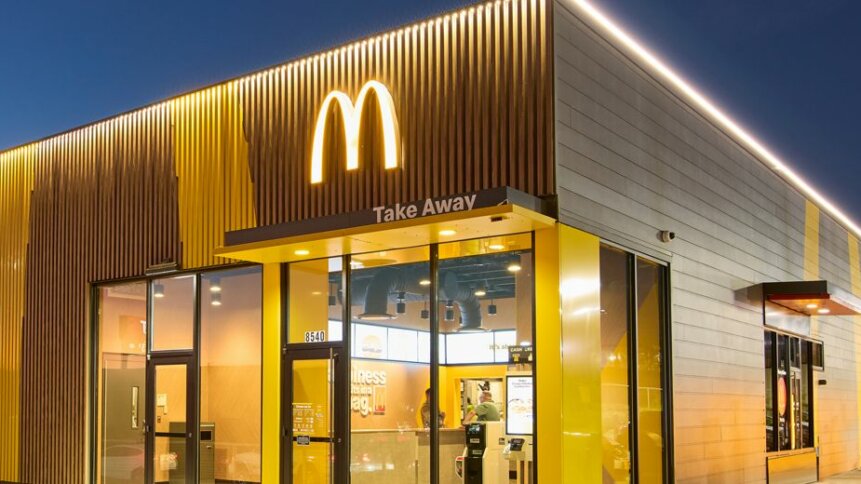
|
Getting your Trinity Audio player ready...
|
- Dining in at fast food restaurants is becoming a thing of the past.
- Chains are removing seating to optimize for takeaway pick-up and delivery.
- The future consists of robot chefs, drone delivery, and anti-sog packaging.
When you imagine a fast food restaurant, what do you see? A sparkling, plastic-and-tile establishment echoing with the squeals of children’s birthday parties and sniggering teenagers? Or queues of silent adults standing behind freestanding touchscreens or an unattended kiosk?
The answer probably differs depending on the last time you set foot in a McDonald’s as, over the past few years, the latter has become a more accurate representation. Technology is turning the sound down, as customers order over the phone or through a touchscreen, stand and wait to pick up their order before grabbing their food and racing outside – all without saying a word.
There has been a notable change in the number of visitors eating at fast food chains, which was accelerated by COVID-19. According to data from the NPD Group, just 14 percent of US quick-service restaurant traffic is now dine-in – just half of what it was pre-pandemic. The following year, 85 percent of all fast food orders were taken to go.
YOU MIGHT LIKE

Five technologies changing the future of fast food
This is working towards a change in fast food restaurant culture. While the so-called ‘Golden Arches’ was once the destination, it is now just a quick stop along a pre-existing journey, if that. Many who want to enjoy some salt, fat, acid, and heat need only open their phones to have it delivered to their door within minutes.
As a result, chains are reducing the number of tables available for their customers, optimizing the space for on-premises orders, takeaways, and drive-thrus instead. This includes more drive-thru lanes and windows specifically for third-party delivery pickup.
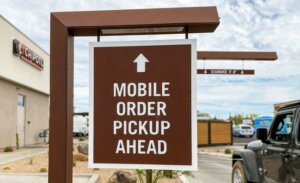
Chipotle already offers designated drive-thru lanes for mobile-order pickups only, and other establishments, like McDonald’s, Burger King, Taco Bell, and KFC, are eager to roll them out too. Source: Chipotle
Fast food – standing room only
TGI Fridays introduced ‘Fridays on the Fly,’ a 2,500-square-foot store format that focuses on delivery and takeaway orders, early last year. Chipotle already offers designated drive-thru lanes for mobile-order pickups only, and other establishments, like McDonald’s, Burger King, Taco Bell, and KFC, are eager to roll them out too.
In fact, McDonald’s has already set up an ‘Order Ahead Lane’ at a branch in Fort Worth, Texas, that is nearly 100 percent automated. The restaurant was opened in December last year and has no indoor seating at all, instead containing special kiosks and digital screens where customers can place their orders to-go.
It also has a special pick-up shelf and a room dedicated to serving delivery drivers. Finally, it has parking spaces available for curbside pick-up, meaning anyone can have a warm meal within minutes of arrival.
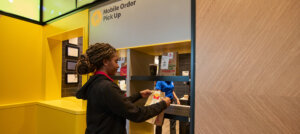
McDonald’s in Fort Worth, Texas has a special pick-up shelf for mobile orders and a room dedicated to serving delivery drivers. Source: McDonald’s
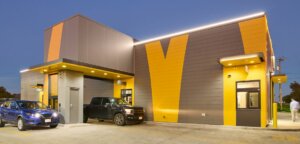
The restaurant was opened in December last year and has no indoor seating at all. Source: McDonald’s
Four months after the Fort Worth branch was opened, it was reported by the Wall Street Journal that McDonald’s would be laying off hundreds of employees as part of a company-wide restructure. A memo sent to staff said that the layoffs were intended to make McDonald’s more efficient.
While most of those impacted worked at the corporate offices rather than in branches, the restructuring was said, at least in part, to “accelerate the pace of… restaurant openings” and “modernize ways of working.” Who knows what changes will come next to help achieve these goals?
YOU MIGHT LIKE
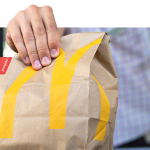
McDonald’s adds AI voice technology to its Drive-thrus
It is clear that most fast food chains are making efficiency improvements a top priority. Wendy’s is piloting “Wendy’s FreshAI” to take orders at drive-thrus and an “underground autonomous robot system” which will see bots delivering orders from kitchens to parking spots. Starbucks plans to open 400 new takeaway or delivery-only branches in the next three years, according to the Wall Street Journal, after removing all of the seating in select cafes.
McDonald’s is also the latest restaurant to utilize ‘geofencing’ – where back-of-house staff are alerted when a customer is approaching the restaurant to pick up their order with their location data, ensuring the food can be ready and warm upon their arrival.
If this trend of shifting towards delivery service is anything to go by, it seems that fast food fans are willing to accept the 30 percent price hike on food ordered through a third-party app, like Deliveroo or Uber Eats, for the comfort and convenience of having a meal in on the sofa.
But if you take into account travel costs, dine-in taxes, and the temptation to go and spend more money at other establishments after eating, does it really end up the more expensive option? Besides, your ludicrous energy bill needs to be paid regardless, so you may as well feel the benefits of it by staying in.
No pickles, no people
The battle for automation rages on, and there are countless technologies that are just waiting to be rolled out more widely. A robot chef called Flippy, from Miso Robotics, can reportedly flip burgers faster than a human while maintaining consistent quality. The bot is being used by White Castle, CaliBurger, and Inspire Brands, the parent company of Buffalo Wild Wings, Arby’s, and Sonic.
Starbucks has already spent millions on AI-powered espresso makers, which can mix brews more quickly than a human barista, and plans to invest even more in the area. The Blendid autonomous smoothie kiosk, which allows customers to order custom fresh drinks via an app before a robot arm gets to work with fruits and vegetables, provides a glimpse into the future of food stalls.

Short, Tall, Grande, Venti… and Robot?
Special packaging is being developed that prevents food from getting soggy over longer periods of time, allowing delivery drivers to take on more orders during their routes.
But those doing the delivery may not be human either. Starship Technologies’ fleet of autonomous ground vehicles currently deliver groceries in cities in the UK and US. They each have ten cameras, GPS, and inertial measurement units, as well as microphones and speakers to interact with customers. Their LIDAR systems provide a 360-degree view of their surroundings, enabling them to navigate pavements and objects to reach their destination.
YOU MIGHT LIKE
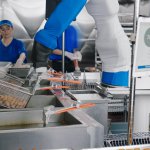
The $30K robot that could transform fast food
In Shenzhen and Shanghai, China, food delivery giant Meituan has been using drones to fly meals between skyscrapers for over a year.
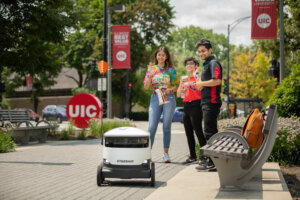
Autonomous food delivery robot from Starship Technologies. Source: Starship Technologies
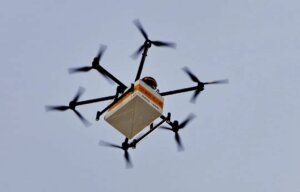
A food-delivery drone from Meituan. Source: Meituan
Where to now?
The poignant atmospheric difference between today’s fast food joints and those of, say, 2002 could have more consequences than just a slightly less happy Happy Meal experience. Many of these branches, McDonald’s particularly, tend to be places favored by vulnerable people.
They are often open all night, are well-lit, have sockets to charge your phone and free Wi-Fi, are cleaned regularly, and serve affordable food. Some have been designated ‘Safe Spaces’ in UK cities, where help is offered to those that need it.
It is unlikely that the ‘virtual restaurants’ of the future – McDonald’s has filed a patent for joints accessible only via a virtual reality headset – will provide similar sanctuary.








